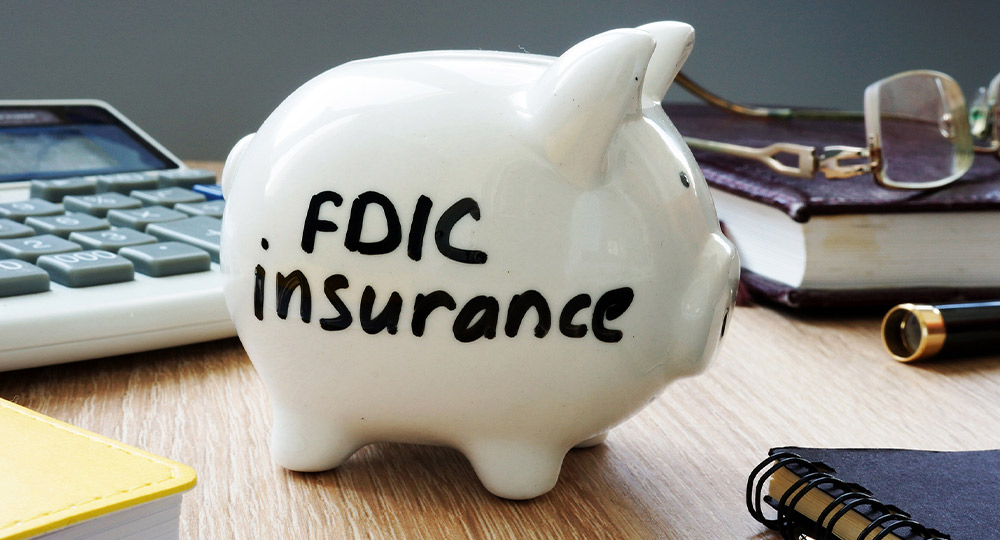News / Press Release | March 15, 2023
The FDIC (Federal Deposit Insurance Corporation) is an independent agency of the United States government that protects bank depositors against the loss of their insured deposits in the unlikely event that an FDIC-insured bank or savings association fails. The FDIC is completely funded by the banking industry. Here are a few things you should know about deposit insurance.
1. What is Covered and How Much?
The standard insurance amount is $250,000 per depositor, per insured bank, for each account ownership category. There are eight separate categories:
- Single Accounts (owned by one person)
- Joint Accounts (owned by two or more persons)
- Certain Retirement Accounts (Includes IRAs)
- Revocable Trust Accounts
- Corporation, Partnership, Unincorporated Association Accounts
- Irrevocable Trust Accounts
- Employee Benefit Plan Accounts
- Government Accounts
The FDIC covers the following deposit products: checking accounts, negotiable order of withdrawal (NOW) accounts, savings accounts, money market deposit accounts (MMDAs), time deposits such as certificates of deposit (CDs), cashier’s checks, money orders, and other official items issued by a bank.
2. What is NOT covered?
The FDIC does not cover: Stock or bond investments, mutual funds, life insurance policies, annuities, municipal securities, safe deposit boxes or their contents, U.S. Treasury bills, bonds or notes, and crypto assets.
You should understand the terms and conditions of financial products offered by non-bank companies and how your funds may, or may not, be protected. It is important to be aware that non-bank companies are never FDIC insured. Even if they partner with insured banks, money you send to a non-bank company is not FDIC insured unless, and until, the company deposits it in an insured bank.
3. How to Calculate Your Coverage?
EDIE, Electronic Deposit Insurance Calculator, is an online tool that lets consumers and bankers know, on a per-bank basis, how the insurance rules and limits apply to a depositor’s specific group of deposit accounts—what’s insured and what portion (if any) exceeds coverage limits at that bank. EDIE also allows the user to print the report for their records.
EDIE can be used to calculate the insurance coverage of all types of deposit accounts offered by an FDIC-insured bank, including:
- Checking Accounts
- Savings Accounts (both statement and passbook)
- Money Market Deposit Accounts (MMDAs), and
- Certificates of Deposit (CDs)
EDIE should not be used for investments including: mutual funds, stocks, bonds, annuities, crypto assets, and any investment that is not a deposit.
4. How to Get Coverage?
Depositors do not need to apply for or purchase FDIC deposit insurance. Coverage is automatic whenever a deposit account is opened at an FDIC-insured bank. If you want your funds insured by the FDIC, simply place your funds in a deposit account at an FDIC-insured bank and make sure that your deposit does not exceed the insurance limit for that ownership category.
If you have additional questions about deposit insurance, the FDIC website has many resources available. Or, contact a banker at a location near you to discuss your accounts.
Source: www.fdic.com – “Deposit Insurance at a Glance” (2014), “The Importance of Deposit Insurance and Understanding Your Coverage” (2022), Deposit Insurance FAQs (2021).








 Email
Email